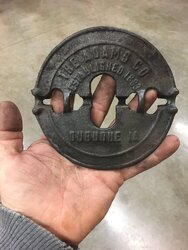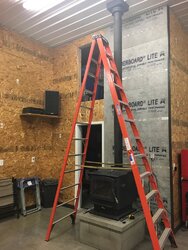Now that I know my flue temperatures I’m going to try a key damper to hold some of that heat in. Lowe’s has the imperial brand for like 8$. My fancy flue probe temperature meter thing is at 18” above the stove.
How close should the damper be to the stove or the probe? Too close to the stove might melt the damper, too close to the probe might bugger up the probe temperature readings. Are either of these valid concerns?
Currently, to get the stove above 600 I need to run flue temps up near 900.
Thanks!
How close should the damper be to the stove or the probe? Too close to the stove might melt the damper, too close to the probe might bugger up the probe temperature readings. Are either of these valid concerns?
Currently, to get the stove above 600 I need to run flue temps up near 900.
Thanks!






